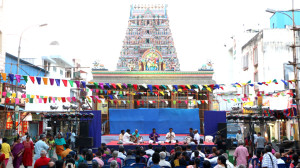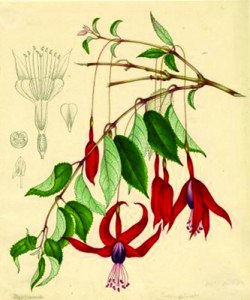Registered with the Registrar of Newspapers for India under R.N.I 53640/91
Vol. XXVIII No. 18, January 1-15, 2019
Dates for your Diary
Mylapore Festival time again

Tamil theatre and traditional puppetry get more space at the 2019 edition of the Sundaram Finance Mylapore Festival ( January 10th-13th).
Two short plays and one full-length play by Augusto will be staged in the open air at the main Sannidhi Street stage area of Sri Kapali Temple.
The two short plays are Love Pannungo Sir by writer Jayakanthan and Bimbam by R. Chudamani. Komal Dharini has curated the plays.
While the first will be staged on January 10th and the second on January 11th evening, both will be staged again on January 12th (Saturday) evening, back to back.
Later, on January 12th evening, Augusto’s Nagammal Padasalai, which runs for 90 minutes, will be staged – a play which has won many awards – with two parallel stories that come to life on two stages, side by side – a novel theatre experiment that this Mylapore-based veteran theatreperson has pulled off well.
The Nagercoil-based B. Muthuchandran Kuzhuvinar Tholpavai Koothu troupe will present two long puppetry shows at this space – on January 10th and 11th evenings.
This Kanniyakumari District troupe follows a hoary tradition – where all its artistes juggle the puppets as well as speak the dialogues and sing simultaneously.
“Five of us handle over 30 different characters in one production and each show can be done in one hour, though we traditionally stage it over many hours at night,” says Muthuchandran, who claims to be a sixth generation puppeteer, tracing the tradition to Marathi artistes who came to Tanjore and then dispersed.
One January 10th, the troupe stages Harischandra and on January 11th, Sundara Kandam extracts from both will run for about 90 minutes.
The 2019 festival will also have much to offer children – from contests in dayakattam and palankuzhi, to craft workshops in the park, a chess tourney at Mylapore Club and a tour of Sri Kapali temple to see the traditional games sculpted into the stones and pillars there (a Kreeda event).
Kreeda will also set up a mela of traditional games on the weekend of the festival inside Lady Sivaswami Ayyar Girls’ School campus, after 4 pm on the two days.
There are six heritage Walks on offer – from social histories of Ramakrishna Mutt Road (by V. Sriram) to the stories of Dr. Radhakrishnan Salai (by Nivedita Louis), besides a Tree Walk in Nageswara Rao Park, two Food Walks by Sridhar Venkataraman, and a Vintage Houses Walk by architect Tahaer Zoyab. All walks are free and do not need advance registration.
Nageswara Rao Park, Luz, will host classical music concerts every morning – mikes are not used here.
The Festival’s flagship event is the Kolam Contest – two will be held on North Mada Street on January 12th and 13th.
This edition of the Mylapore Festival expands to South Mada Street – where the pavement along the temple tank will showcase a photo show – visuals of Mylapore of the past – and an Art Show curated by Poornima of The Art Room.
The Food Stalls Street, the most popular of the festival will come alive on all four evenings.
This year, a showcase of eco-products will be on East Tank Street (off the west gopuram of Sri Kapali Temple) – curated by Organic Farmers’ Market’s Anantha Sayanan.
The festival is fully supported by Sundaram Finance. All details at www.mylaporefestival.com
Noltie brings Cleghorn ‘home’

Till January 30: Forests and Gardens of South India: The Cleghorn Collection of Botanical Drawings – an exhibition at DakshinaChitra in collaboration with the Royal Botanic Garden Edinburgh.
The exhibition contains reproductions of 54 watercolour drawings in the collection of the Royal Botanic Garden Edinburgh. The text and captions are by Dr. Henry Noltie, who curated the first showing of the drawings in Edinburgh in 2010. From 1986 to 2017, Henry Noltie worked at the Royal Botanic Garden Edinburgh as a curator and taxonomist. He is now a Research Associate there. For 14 years he worked on the Flora of Bhutan project, of which he wrote two of the volumes.
The last of Noltie’s Indian monographs consist of three volumes on the collections of Hugh Cleghorn (1820-1895), a pioneering Forest Conservator, the source of one of the largest groups of botanical drawings and many important books in the RBGE collection.
This exhibition was first shown in 2010 at the Royal Botanic Garden Edinburgh (RBGE), Scotland, where the original drawings are one of the treasures of the library. The drawings were commissioned from several Indian artists by Hugh Cleghorn (1820-1895), the first Conservator of Forests for the Madras Presidency. The exhibition is devoted to drawings from the periods 1845-7 and 1852-9. The title is taken from a book that Cleghorn published in London in 1861 and reflects the two major sources of his botanical subjects and interests.

